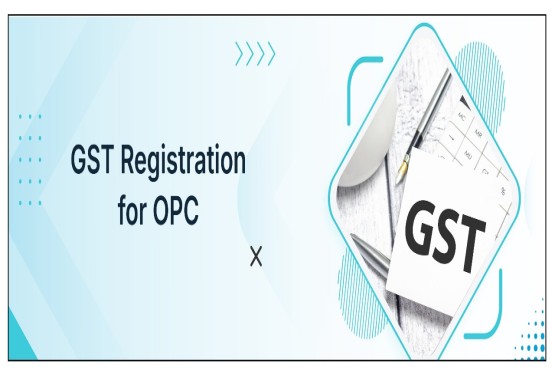A subsidiary company is a distinct legal entity in which another company, known as the holding or parent company, exercises control either by holding more than fifty percent of its share capital or by controlling the composition of its Board of Directors. Where the entire share capital is held by the holding company, the entity is termed a wholly owned subsidiary. In India, both Indian and foreign companies commonly incorporate subsidiaries as a means to expand their business operations and establish a local presence. The incorporation of a subsidiary is governed by the provisions of the Companies Act, 2013, and requires a clear understanding of the legal framework, procedural requirements, necessary documentation, and ongoing compliances. Setting up a subsidiary in India thus serves as both a strategic and regulatory exercise, enabling companies to align with local laws while accessing one of the largest and most dynamic markets in the world.
Definition of Subsidiary Company
As per Section 2(87) of the Companies Act, 2013, a subsidiary company, in relation to a holding company, is a company in which the holding company either controls the composition of the Board of Directors or exercises or controls more than one-half of the total voting power, either on its own or together with one or more of its subsidiary companies. The Act also provides that certain classes of holding companies, as may be prescribed, shall not have layers of subsidiaries beyond the limit notified by the Central Government. In simpler terms, a subsidiary is a company over which another company, referred to as the holding or parent company, has significant control through ownership of more than 50% voting rights or the authority to appoint and manage the Board of Directors. Where the parent company holds the entire shareholding of such a company, it is referred to as a wholly owned subsidiary.
Documents Required for Registration of a Subsidiary Company in India
To incorporate a subsidiary company in India, certain documents relating to the company as well as the directors and shareholders are required. These include:
Company-Related Documents
-
Memorandum of Association (MOA) and Articles of Association (AOA) of the proposed subsidiary.
-
Proof of registered office address (Rent Agreement along with NOC from the owner, in case of rented property; or ownership documents, in case of owned premises).
-
Copy of recent utility bill (electricity, water, gas, etc.) not older than two months.
-
Board Resolution passed by the parent/holding company approving the incorporation of the subsidiary in India.
-
Capital structure/layout of the proposed subsidiary company.
-
Certificate of Incorporation of the parent/holding company (in case of a foreign company, duly attested/apostilled).
Directors and Shareholders-Related Documents
-
Digital Signature Certificate (DSC) and Director Identification Number (DIN) of all proposed directors.
-
Identity proof of directors and shareholders (Passport/Driving License/Voter ID/Aadhar Card, as applicable).
-
Address proof of directors and shareholders (Bank Statement/Utility Bill not older than two months).
-
Passport-size photographs of all directors and shareholders.
-
Details of shareholding and directorships held by the first directors in other companies.
-
Declarations by directors and shareholders regarding their eligibility and consent to act as directors/shareholders.
How to Register a Subsidiary Company in India
The incorporation of a subsidiary company in India is carried out in accordance with the provisions of the Companies Act, 2013. While the procedure largely resembles that of incorporating any other company, the process for a subsidiary also requires certain additional documents and approvals, particularly from the parent company. Broadly, the steps involved in the registration are as follows:
Determine the company structure
Begin by deciding the legal form of the Indian entity most foreign parents choose a private limited company because it offers limited liability, flexibility in governance, and simpler compliance than a public company. At this stage, settle the shareholding pattern, board composition (including any nominee directors of the parent), and the objects to be pursued in India, ensuring that the proposed activities align with India’s FDI policy and any sector-specific conditions.
Obtain Digital Signature Certificates (DSC)
Because company registration is entirely electronic, each proposed director and subscriber must hold a valid DSC to sign the incorporation forms and linked declarations. For foreign signatories, identity and address proofs should be notarised and apostilled (with certified English translations where required). Resident signatories typically self-attest PAN/Aadhaar and provide recent address proof and contact details.
Secure name approval
File SPICe+ Part A on the MCA portal to reserve the subsidiary’s name, providing two options in order of preference with a short justification tied to the intended objects. Where the proposed name includes or resembles the parent’s name, attach the parent’s board resolution or a formal No-Objection Certificate authorising use of its name or brand. On approval, you will receive a name reservation valid for proceeding with incorporation.
Draft the constitutional documents (MoA and AoA)
Prepare the Memorandum of Association and Articles of Association in conformity with the Companies Act, 2013 and the intended business activities. These are typically filed in e-form (e-MoA and e-AoA) along with the SPICe+ application. Ensure the objects clause is precise and matches the rationale provided at the name-approval stage, and embed any shareholder-level governance arrangements in the Articles where appropriate.
File incorporation forms and pay statutory fees
Complete SPICe+ Part B and the linked e-forms SPICe+ MOA, SPICe+ AOA, and AGILE-PRO within the prescribed timeline after name reservation. The application will capture the registered and correspondence addresses, capital structure (authorised and paid-up), particulars of directors and subscribers (with consents and declarations), and attachments such as proof of the registered office, recent utility bills, the parent company’s certificate of incorporation, and the parent’s board resolution approving formation of the Indian subsidiary. Applicable filing fees and stamp duty are paid online at submission.
Receive the Certificate of Incorporation (COI)
Upon scrutiny, the Registrar of Companies issues the Certificate of Incorporation containing the Corporate Identification Number (CIN). This document evidences the company’s legal existence in India. Where the integrated application is used, PAN and TAN are generally allotted along with the COI; if not obtained through SPICe+/AGILE-PRO, they should be applied for immediately post-incorporation.
Obtain tax and other registrations (including GST, as applicable)
Following incorporation, ensure tax registrations are in place. PAN/TAN may be allotted through the incorporation bundle; otherwise, apply separately. If the business will cross GST thresholds or engages in activities requiring GST irrespective of turnover (e.g., inter-State supplies), obtain a GSTIN this can be applied for via AGILE-PRO or as a standalone registration. Depending on staffing plans, obtain EPF and ESI registration (also facilitated through AGILE-PRO).
Open the company bank account
Open a bank account in the company’s name to receive subscription money and carry on business. Banks typically require the COI, PAN/TAN (if available), the board resolution authorising account opening and signatories, KYC of directors/authorised signatories, and proof of the registered office.
Comply with FEMA/RBI and other regulatory requirements
Where foreign investment is involved, ensure compliance with the Foreign Exchange Management Act (FEMA) and applicable RBI/FDI policy conditions. This includes adhering to sectoral caps and routes, pricing guidelines for any share allotment, and post-investment filings (such as reporting of foreign investment and share allotments on the RBI FIRMS portal) within prescribed timelines. In addition, consider state-level registrations such as Shops & Establishments, Professional Tax (where applicable), and any sector-specific licences.
Commence business and meet early-stage corporate compliances
After receiving subscription money into the bank account, complete initial corporate actions issue and stamp share certificates, update statutory registers, appoint the first auditor, and file any commencement/initial declarations as required. From here, the subsidiary may commence operations, subject to ongoing compliance under the Companies Act, 2013, income-tax and GST laws, labour legislation, and FEMA/RBI regulations, as applicable to its line of business.
Conclusion
Registering a subsidiary company in India involves a well-defined legal process that balances both statutory compliance and business strategy. From deciding the structure and obtaining approvals to fulfilling incorporation requirements and post-registration obligations, each step plays a crucial role in ensuring a smooth setup. While the procedure may seem complex, especially for foreign entities FDI and FEMA guidelines, a subsidiary ultimately offers significant benefits it creates a distinct legal identity, safeguards the parent company through limited liability, and enables direct access to the Indian market. With proper planning and adherence to the legal framework, establishing a subsidiary becomes a reliable pathway for companies looking to expand their global presence and tap into India’s growing economic opportunities.
Frequently Asked Questions
Q1. What is a subsidiary company under the Companies Act, 2013?
Ans. A subsidiary company is one in which another company (holding/parent) controls more than 50% of its share capital or board composition.
Q2. Can a foreign company register a subsidiary in India?
Ans. Yes, foreign companies can set up a subsidiary in India, subject to the provisions of the Companies Act, 2013, Foreign Exchange Management Act (FEMA), and sector-specific FDI regulations.
Q3. What is the difference between a subsidiary and a wholly-owned subsidiary?
Ans. A subsidiary is controlled by a parent company through majority ownership, while a wholly-owned subsidiary is one where 100% of the shareholding is held by the parent company.
Q4. What documents are required for registering a subsidiary in India?
Ans. Documents include the Memorandum and Articles of Association, proof of registered office, utility bills, parent company’s incorporation certificate, board resolution, DSC, DIN, identity and address proofs of directors and shareholders, and declarations.
Q5. How long does it take to incorporate a subsidiary company in India?
Ans. On average, the process takes 2–4 weeks, depending on document readiness, approvals, and whether foreign documents require notarisation/apostille.
Q6. Is there any minimum capital requirement for registering a subsidiary in India?
Ans. No, the Companies Act, 2013 has removed the minimum paid-up capital requirement, though sectoral regulations may prescribe specific investment thresholds.
Q7. Do foreign directors need to be present in India during the incorporation process?
Ans. No physical presence is required, but at least one director must be a resident of India (living in India for at least 182 days in the previous calendar year).
Q8. Is RBI or FEMA approval mandatory for setting up a foreign subsidiary in India?
Ans. Not for incorporation itself, but compliance with FEMA and FDI policies is mandatory for capital inflow, share allotment, and ongoing filings.
Q9. Can a subsidiary company carry out any business activity in India?
Ans. Yes, but the activities must align with the objects mentioned in its MoA, comply with sectoral laws, and respect FDI caps and restrictions.
Q10. What are the post-incorporation compliances for a subsidiary in India?
Ans. These include opening a bank account, issuing share certificates, filing commencement forms, appointing the first auditor, maintaining statutory registers, and complying with ROC filings, tax registrations, FEMA/RBI reporting, and other applicable laws.












_crop10_thumb.jpg)





_crop10_thumb.jpg)




























-Form_crop10_thumb.jpg)

_crop10_thumb.jpg)























_learn_crop10_thumb.jpeg)
































_crop10_thumb.jpg)

_crop10_thumb.jpg)





















_crop10_thumb.jpg)















_for_Foreign_Directors_learn_crop10_thumb.jpeg)




_Act,_2015_learn_crop10_thumb.jpg)



































_learn_crop10_thumb.jpg)
































